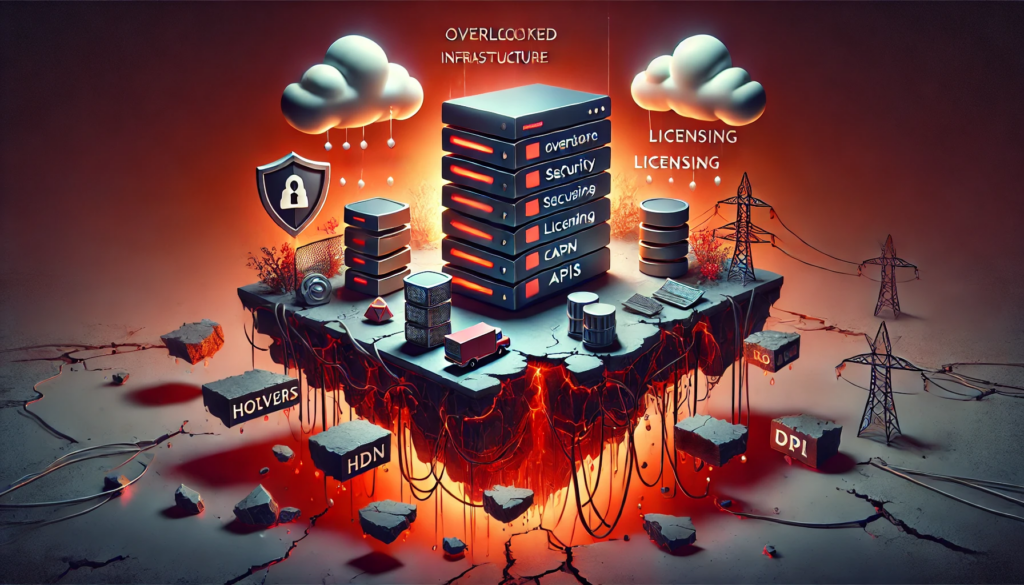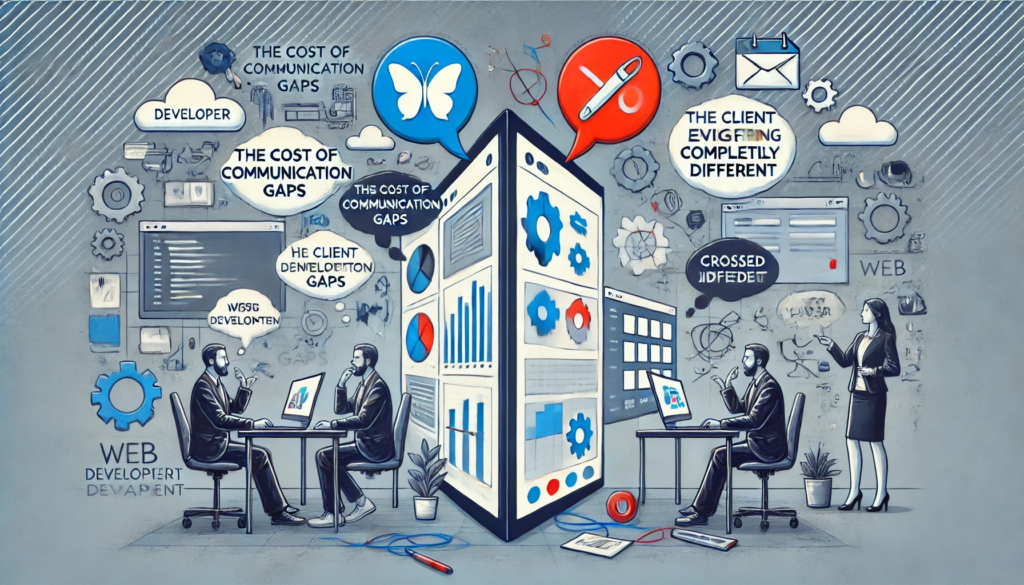Hidden Costs in Web Development: Recognizing Pitfalls and Ensuring Success
It is easy to get excited when you are about to launch a new website or redesign an existing one. You visualize responsive layouts, seamless user experiences, and the myriad ways your site will enhance your brand’s presence. Yet, in the midst of this excitement, hidden costs can creep into the project, turning your initial budget estimates into an ever-expanding figure that leaves you wondering how it all got so expensive. Understanding the origins of these unforeseen expenses and learning how to mitigate them are crucial steps in ensuring a successful web development experience.
Web development projects sometimes appear straightforward at first. Clients map out a set of requirements, hire a capable team, and anticipate a delivery date. Everything seems fine until unexpected expenses emerge. When unplanned work accumulates—due to overlooked tasks, additional functionalities, or infrastructural adjustments—costs escalate dramatically. These costs do not always come from the obvious realm of design or development hours. Instead, they often hide in the form of underestimated hosting fees, licensing charges, scope creep triggered by unclear project goals, or even extensive maintenance and debugging after launch. Such hidden costs can erode trust between the development team and the client, cause project delays, and lead to frustration on both sides.
Before exploring the core pitfalls, it is important to acknowledge that these invisible expenses are not inevitable. Proper planning, transparency, and ongoing communication can make a significant difference. Working with an experienced partner like Vadimages web development studio is one sure way to address potential cost surprises. We at Vadimages not only build beautiful, high-performing websites, but also pride ourselves on guiding our clients through the entire project lifecycle, explaining each step in plain language and preventing extraneous surprises. This article discusses common scenarios where hidden costs arise, while also providing guidance on how to steer your project away from these budgetary pitfalls and into successful completion.
––––––––––––––––––––––––––––––––
Understanding the True Scope

A major reason for unforeseen costs is a misunderstanding of the project’s true scope. This misunderstanding can start early, sometimes before development has even begun. A small business owner, for example, might contact a developer with a concept for a simple e-commerce platform. Because the business owner assumes it is “just a small shop,” they do not thoroughly assess their own requirements. As development progresses, the owner realizes that they also need advanced filters, multiple payment gateways, and an automated inventory system to handle their daily operations. Each new request represents a task not accounted for in the initial scope, and that leads directly to added costs.
An effective way to preempt such issues is to compile a comprehensive set of requirements from the start. Instead of focusing merely on design or perceived must-have features, spend time examining the complete customer journey, administrative tools you need behind the scenes, and the possible future expansions your business might undertake. Revisions will always happen, of course, but the goal is to minimize seismic changes that blow up the budget. For those on the development side, an in-depth discovery phase is essential. At Vadimages, we conduct a thorough preliminary evaluation to make sure our clients’ visions and practical needs line up before a single line of code is written. This approach helps avoid a scenario where a project is nearly finished, and someone exclaims, “But wait, we also need this major functionality!”
Although scope creep is sometimes inevitable in fast-paced industries, carefully defining what your website must do—and what it might do in later iterations—can spare you from the avalanche of hidden costs. During the early stage of any project, it is important to maintain a living project document or to engage in iterative sprints. Each time a modification is suggested, the development team must assess its possible impact on costs and timelines. By taking this incremental approach, you gain visibility into how new requests will alter the project’s direction. Such transparency eliminates sticker shock and fosters an environment where the client and the development team are aligned at each stage. The last thing anyone wants is to discover halfway through the project that vital features have been overlooked, because adding them retroactively can cost more than if they had been accounted for in the initial plan.
––––––––––––––––––––––––––––––––
Overlooked Infrastructure Expenses

In many web development projects, hosting and infrastructure appear deceptively simple. Clients believe they can pick the cheapest hosting plan or use basic off-the-shelf services, expecting that the site will run flawlessly. Reality often proves more complex. Modern websites are expected to handle heavier traffic, integrate with third-party services, and remain secure from malicious actors. These requirements often necessitate robust hosting solutions, premium security certificates, caching layers to speed up load times, and specialized maintenance tasks that go beyond mere design.
For instance, a site intended to serve global users might require a content delivery network (CDN) to ensure fast loading from multiple geographic locations. A membership-based site that processes payment data will need advanced encryption and compliance measures, which translate into higher hosting fees and occasional licensing charges for specialized software or plugins. Often, these details remain invisible until a site experiences performance issues or runs afoul of security vulnerabilities. By that stage, the cost to rectify these issues can exceed what you would have paid had you chosen proper infrastructure solutions from the start.
The same principle applies to third-party integrations. A project may initially specify a requirement for social media sign-in functionality, not realizing that certain third-party APIs might introduce monthly fees or usage-based pricing that accumulates. Some platforms also limit the volume of data or calls you can make without incurring extra costs. Moreover, any changes to these third-party services—like a shift in their pricing tiers—could ripple through your site, requiring emergency adjustments by your development team. Each of these small events can add unexpected costs that pile up over time.
Vadimages understands the importance of sustainable infrastructure choices. We have encountered instances where clients opted for low-cost hosting only to discover that their site slowed to a crawl with moderate traffic. Upgrading after launch sometimes demands site migrations and reconfigurations that can disrupt business, rather than seamlessly scaling the existing infrastructure. Our approach revolves around identifying the correct infrastructure for the project in its current state and planning for how it will evolve. By transparently discussing these needs from the outset, we help our clients avoid the frustrating cycle of constantly reacting to performance or security emergencies. This saves money over the long run and allows you to focus on growth rather than scrambling to fix recurring issues.
––––––––––––––––––––––––––––––––
The Cost of Communication Gaps

Communication issues can be one of the most expensive hidden pitfalls in any web development project. When clients and developers operate from different assumptions or fail to update each other in a timely manner, misalignments occur. These misalignments frequently involve the design process, user experience considerations, content creation, or even fundamental data structures. Imagine a scenario where a developer spends weeks creating a certain user dashboard, only to discover that the client’s vision of what this dashboard should display was never properly communicated. The resulting rework involves not only additional development hours but also potential changes to databases and possibly even a redesign of the user interface.
These issues are not limited to misunderstandings at the project’s start. They often arise during critical decision-making moments. Timely feedback is essential to keep a project on track, but if the client or the development team does not respond quickly enough, multiple revisions can accumulate. Endless iterations drain both time and resources, leading to a ballooning budget. Clear, continuous dialogue about design intentions, data requirements, and future expansions significantly decreases the chances of catastrophic mid-project pivots.
An example of how poor communication can trigger extra expenses comes in the content phase. Suppose a client hires a web development studio to build a blog section. No one discusses who will provide the actual articles, how these articles will be formatted, or what metadata needs to accompany them. As launch day nears, the client realizes the site lacks editorial functionality, that more advanced SEO tools are needed, and that existing templates do not support the desired typography for long-form content. The development team scrambles to add features, restructure the database for new metadata fields, and rework the layout for improved readability. Each of these tasks was avoidable if addressed earlier.
Vadimages approaches this challenge by ensuring consistent communication frameworks. We employ collaborative tools for real-time communication, hold regular check-ins to gather feedback, and provide prototypes for each significant milestone. Rather than letting misunderstandings linger, we address them immediately, which drastically reduces the potential for last-minute design or functionality changes. We encourage our clients to articulate their requirements in as much detail as possible, while also relying on our team’s expertise to uncover needs clients might not realize they have. By clarifying how each portion of the site should function, we minimize the need for expensive overhauls later. Proper communication is at the heart of any smooth project, preventing budget expansion driven by repeated reworks, extended timelines, and general confusion.
––––––––––––––––––––––––––––––––
Planning for Growth and Future-Proofing

Many site owners assume that once a web development project is delivered, that is the end of the journey. However, websites are dynamic digital assets that need ongoing updates, security patches, fresh content, and evolving features to remain relevant. One of the greatest hidden costs in web development often emerges in the post-launch period. If the project was built without scalability in mind, every future improvement might demand a large technical overhaul, which is neither cost-effective nor efficient. For example, adding new content types could become a complicated process if the underlying infrastructure was not designed to accommodate them. Likewise, any changes in search engine optimization best practices might require structural rewrites if those possibilities were not anticipated early on.
This brings us to the concept of future-proofing. It involves making architecture, design, and technology decisions that allow your website to adapt gracefully as new requirements arise. Though future-proofing might require a higher initial investment, it usually saves money by avoiding the need for frequent rebuilds. It also lets you integrate new tools and functionalities more seamlessly when the time comes. Whether you are considering membership systems, e-commerce expansions, or advanced analytics that provide insight into user behavior, thoughtful upfront planning will pay dividends over the lifecycle of your digital platform.
An illustration of the value of planning for growth is the integration of advanced e-commerce capabilities. Suppose you launch a small store that sells only a handful of products. Because you want to keep costs down, you select a minimal platform with basic functionality. In six months, your business takes off, and you need to add hundreds of products, manage inventory in real time, and implement international shipping rules. If the site was not engineered for scalable expansions or robust plugin compatibility, your upgrade path may involve tearing down the existing system and rebuilding it. This forced migration is more costly than if you had chosen a scalable foundation in the first place.
At Vadimages, we emphasize a forward-looking development strategy. We remain vigilant about emerging technologies and best practices, advising our clients on the potential benefits or drawbacks of each decision. Our team does not simply stop after delivering a website; we offer ongoing support, maintenance, and updates that keep your online platform healthy, secure, and relevant. By providing a roadmap for the future, we ensure clients can scale up without the fear of hidden expenses lurking around every upgrade. This approach not only preserves your budget but also protects your brand reputation from disruptions like downtime or security issues. Clients who take advantage of our maintenance plans find that consistent oversight often prevents sudden crises, which inevitably cost more in time, revenue, and consumer trust.
––––––––––––––––––––––––––––––––
Within this article, we have covered the common pitfall zones in web development where hidden costs usually hide. Each area—whether it is misunderstanding the scope, ignoring infrastructure needs, dealing with communication breakdowns, or neglecting future-proofing—can become expensive if not carefully managed. Yet, you are not helpless against these challenges. Proactive planning, open communication, and professional guidance are critical to keeping your web project on time and on budget.
For those seeking a reliable partner to handle these complexities, Vadimages stands ready to help. Our web development studio combines creativity with a commitment to robust technical solutions. We champion transparency from day one, walking you through each requirement, keeping communication channels open, and offering the level of scalability your business deserves. If you want a platform that not only meets today’s expectations but also anticipates tomorrow’s possibilities, consider engaging Vadimages for your next web development venture.
As a final note, to illustrate how these hidden costs can escalate, imagine a visual flowchart of a typical web project lifecycle. In the top-left corner of this conceptual graphic, you see the basic idea and initial budget. Arrows move from one stage to the next, including requirement gathering, design, development, testing, and launch. At each checkpoint, smaller boxes pop up to highlight potential extra fees—licensing, third-party integrations, infrastructure upgrades, or redesign costs if stakeholder feedback arrives too late. Emphasizing how easily these small boxes accumulate is the goal of this hypothetical graphic. One corner of the image features a bold call to action reminding viewers that when working with Vadimages, these pitfalls are identified and mitigated during the earliest phases of the project.
Our approach is grounded in helping clients circumvent these invisible traps so they can concentrate on the core of their business: delivering a unique service, telling a compelling story, and engaging effectively with their audience. Whether you are an entrepreneur with a fresh idea or an established brand seeking to overhaul an existing platform, Vadimages offers the technical and creative acumen to transform your concept into a robust digital presence. By prioritizing transparency and sustainable design, we reduce the risk of spiraling budgets, ensuring your investment aligns with your objectives.
A website can be a powerful tool when designed with both immediate and long-term goals in mind. Adopting a preventive strategy pays off, especially when the stakes include your brand image, customer satisfaction, and overall profitability. Hidden costs thrive in environments where the project scope is fluid, communication channels are weak, or infrastructure remains an afterthought. Conversely, they shrink to insignificance when guided by strong collaboration, strategic foresight, and a constant awareness of the website’s future. In that sense, every hour spent clarifying requirements or refining a blueprint is an hour saved in frantic repairs and budget overruns.
If you are seeking peace of mind along with a stunning, high-performing web presence, it might be time to give Vadimages a try. Our experience has shown that the most rewarding projects are those in which clients and developers partner in a shared mission: to build something exceptional while keeping an eye on both present constraints and future opportunities. When you choose Vadimages, you gain an ally who helps you map out your site’s growth trajectory, fortify your infrastructure, and eliminate the crippling communication gaps that often unravel good ideas.
Reach out to us at https://vadimages.com to learn more about how our services can elevate your web development experience. We look forward to helping you avoid the pitfalls that plague so many businesses and to guiding you toward a digital solution that is as sustainable and adaptable as it is visually striking. Embrace a web development journey free from nasty surprises and hidden fees. Instead, focus on creating a digital platform that resonates with your audience and paves the way for your brand’s continued success.

